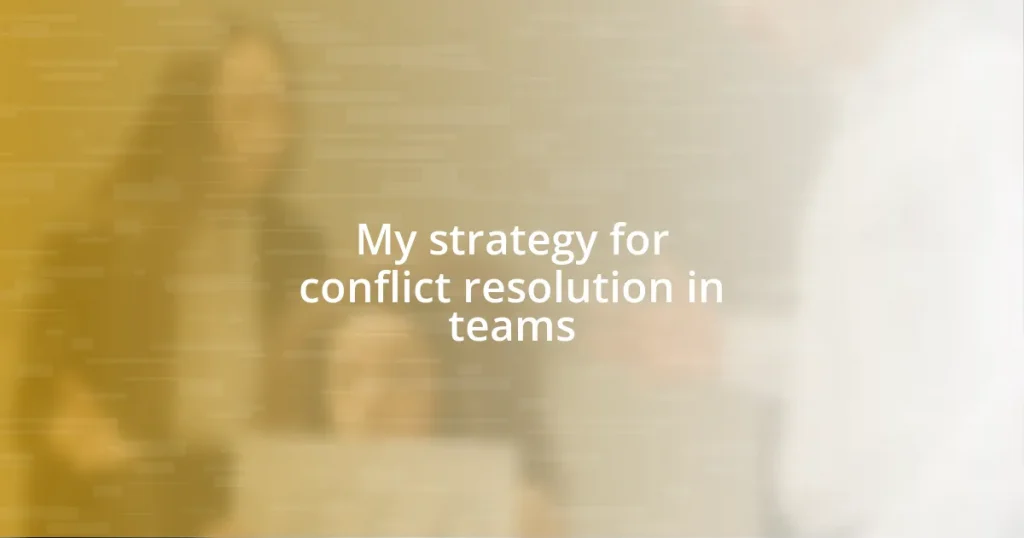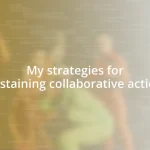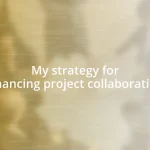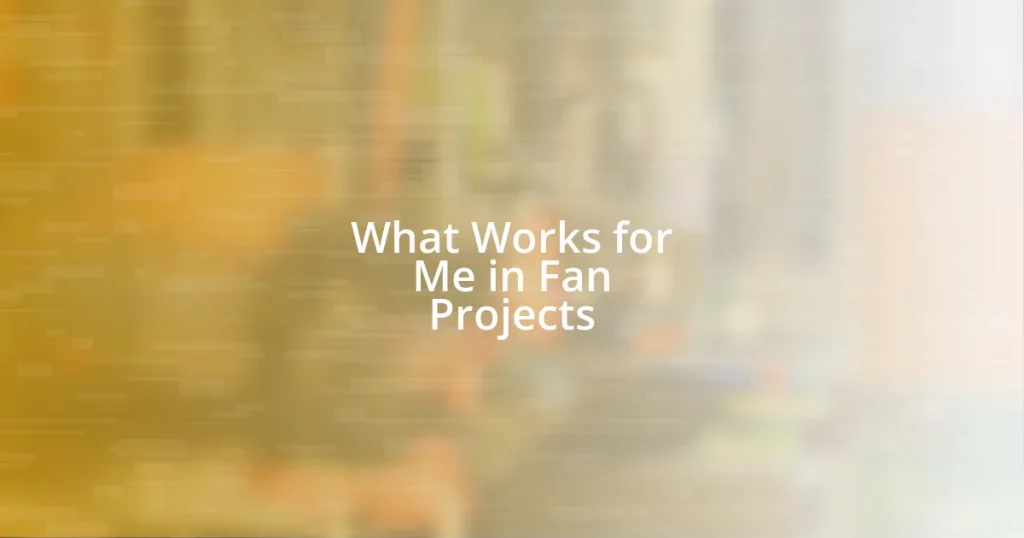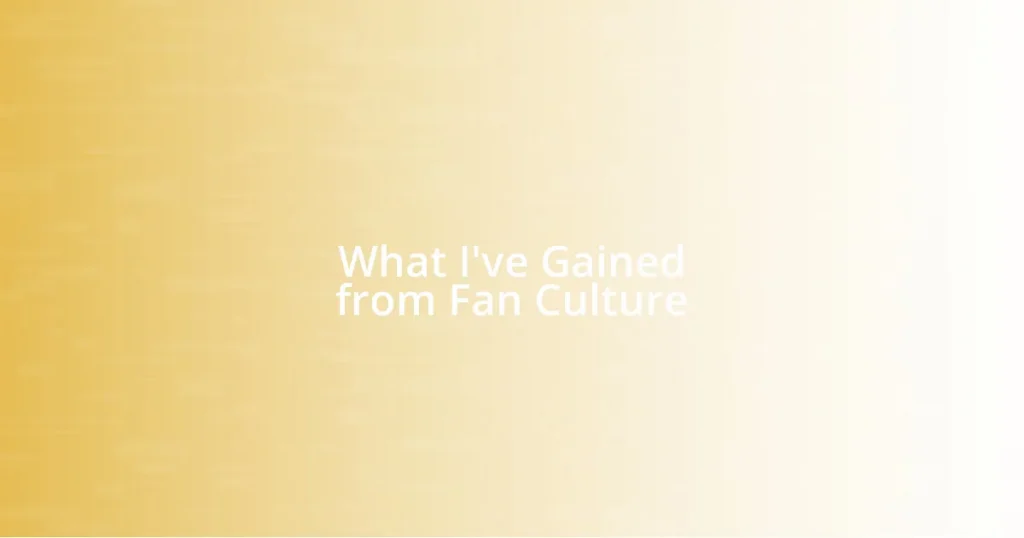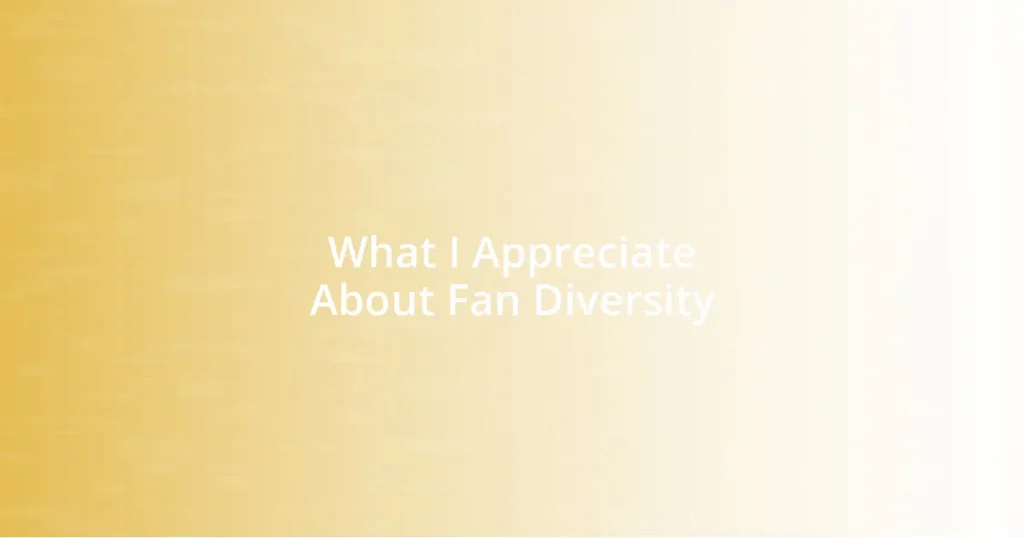Key takeaways:
- Conflict can lead to growth and innovation if managed properly by creating open dialogue and embracing differing perspectives.
- Common causes of team conflict include differing objectives, communication issues, personality clashes, and role ambiguity.
- Effective conflict resolution involves active listening, asking open-ended questions, and pursuing collaborative solutions to foster a supportive team culture.
- Evaluating conflict resolution outcomes deepens trust and collaboration, emphasizing the emotional impact on team dynamics and promoting continuous improvement.
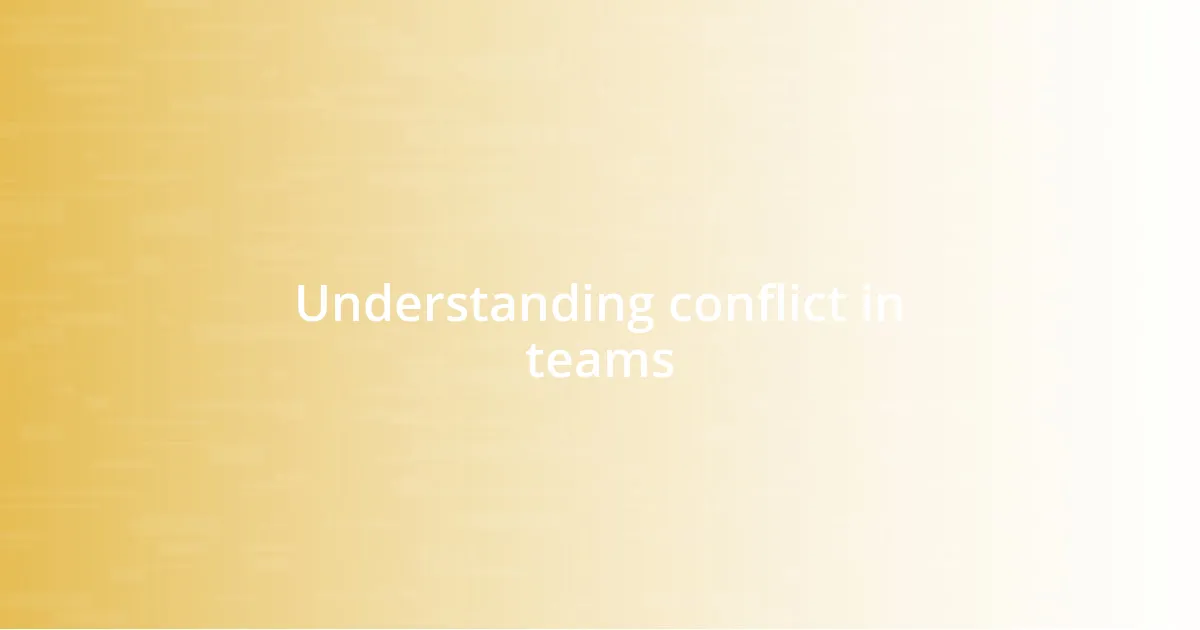
Understanding conflict in teams
Conflict in teams often arises from differing perspectives and personalities. I remember a time when a project I was involved in hit a snag because two team members strongly disagreed on the approach. It was fascinating to see how their contrasting styles not only created tension but also opened up a deeper dialogue about our goals. Have you ever witnessed how a clash of ideas can sometimes spark creativity?
Understanding conflict requires recognizing that it’s not inherently negative. In my experience, a bit of friction can lead to innovative solutions when managed properly. I once facilitated a team discussion where differing opinions were welcomed, and the resolution brought us closer. This taught me that embracing conflict can lead to growth, not just resolution.
It’s essential to identify the source of conflict, whether it’s communication breakdowns or misaligned goals. I’ve found that sometimes, simply acknowledging the disagreement can defuse tension. Have you ever had a moment of clarity after addressing a conflict head-on? Those moments can transform relationships and strengthen team dynamics significantly.
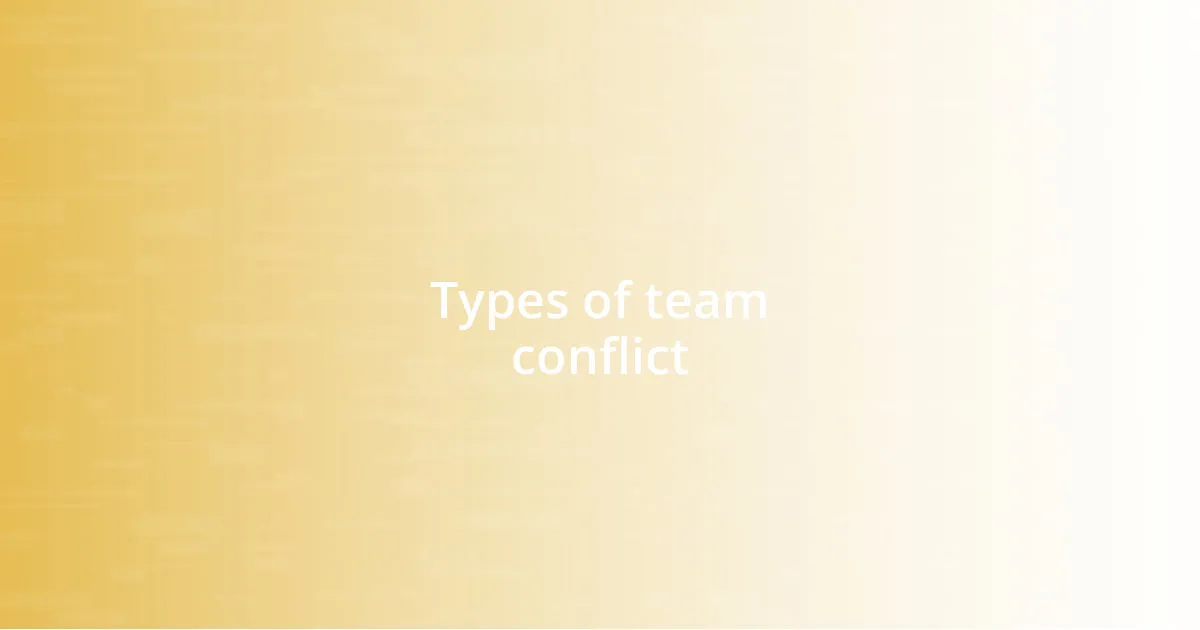
Types of team conflict
Some common types of team conflict include task-related, interpersonal, and process conflicts. Task-related conflicts arise when team members disagree on the content or direction of the work. I recall a situation where our team had a heated exchange over the project’s timeline; it was intense but ultimately clarified our priorities and aligned our goals.
Interpersonal conflicts stem from personal differences among team members, often influenced by distinct communication styles. I vividly remember a team project where one member’s direct approach clashed with another’s more sensitive demeanor. This situation highlighted the need for empathy in understanding each other’s perspectives and finding common ground.
Process conflicts involve disagreements on how to accomplish a task. There was a time when our team couldn’t agree on roles during a critical phase of a project. By discussing our preferred methods openly, I was amazed to see each member’s skills shine through, leading us to a more effective workflow. Recognizing and addressing these conflicts can lead to quicker resolutions and better collaboration.
| Type of Conflict | Description |
|---|---|
| Task-related | Disagreement on content or direction of work. |
| Interpersonal | Conflicts stemming from personal differences and communication styles. |
| Process | Disagreements about the methods or roles involved in completing tasks. |
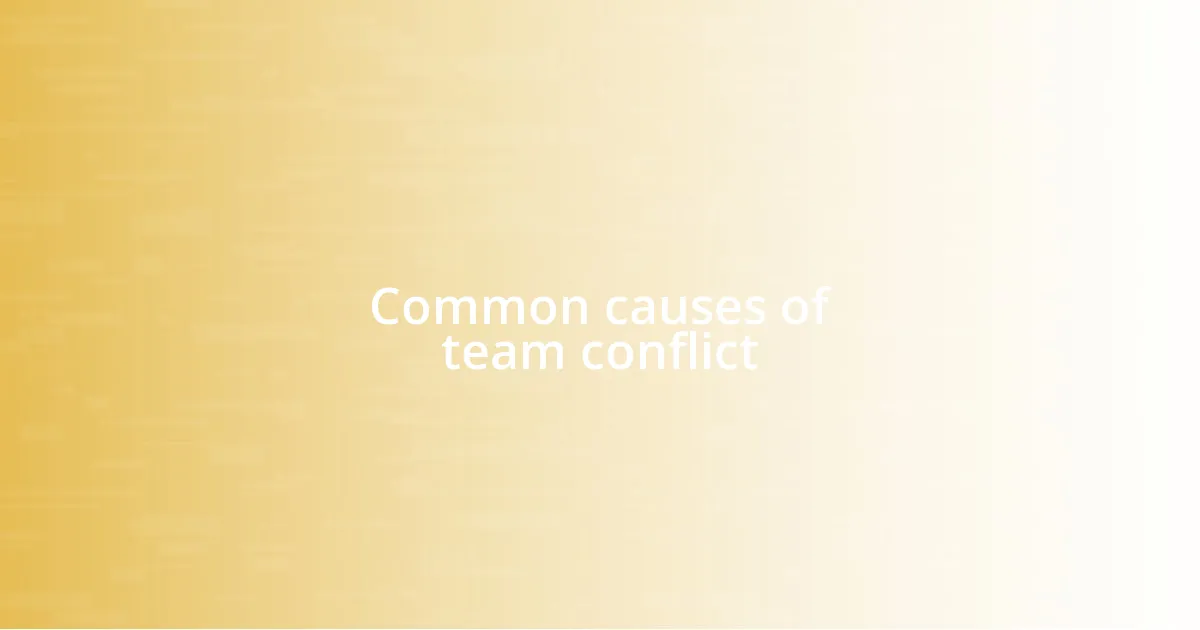
Common causes of team conflict
Conflicts within teams often arise from various underlying causes that, while frustrating, are quite common. For instance, when team members have different priorities or values, it can create misunderstandings. I once worked on a project where one member was focused on speed, while another prioritized quality. This clash led to some heated discussions, but I realized that it was crucial to understand where each person was coming from.
Here are some common causes of team conflict:
- Differing Objectives: Team members may have different goals, which can lead to misalignment in their efforts.
- Communication Issues: Poor communication or lack of clarity can create confusion and frustration among team members.
- Personality Clashes: Different personality types can lead to misunderstandings and tensions, especially in high-stress environments.
- Role Ambiguity: When team members are unclear about their roles, it can lead to overlaps and conflicts over responsibilities.
In my experience, addressing these root causes early on can help steer the team toward collaborative solutions. Just the other day, we encountered some miscommunication in a brainstorming session, where everyone’s ideas got mixed up. By taking a moment to clarify each person’s suggestions, we restored harmony and even sparked some innovative ideas in the process. It’s moments like these that remind me how understanding the nuances of conflict can turn challenges into opportunities for growth.
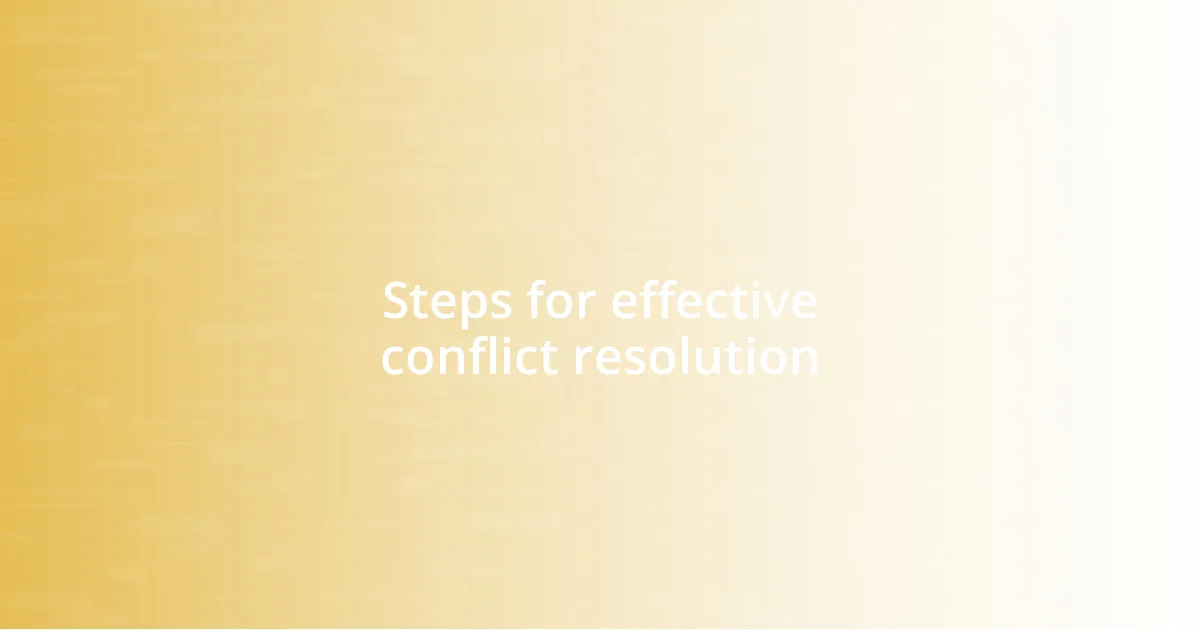
Steps for effective conflict resolution
One of the first steps I’ve learned in effective conflict resolution is creating a safe space for open dialogue. Remembering a time when a concerns meeting turned into a heated debate, I realized that setting ground rules for respectful communication made a world of difference. How can you truly resolve an issue if team members feel too intimidated to speak up? Encouraging honest expression fosters trust and lays the groundwork for resolution.
Active listening is another crucial aspect. I’ve sat in countless meetings where team members were more focused on formulating their responses than truly hearing one another. I often find myself reminding my team that listening is just as important as sharing views. When I genuinely listen, I often discover insights that lead to a solution that might not have been initially obvious, reminding us that clarity often sprouts from understanding.
Finally, it’s vital to pursue collaborative solutions. During one intense brainstorming session, I noticed that rather than competing for the best idea, the team began to build on each other’s suggestions. I remember how one modest proposal turned into a well-rounded plan by combining different perspectives. It struck me then—could this synergy be the key to not just resolving disputes but elevating the entire team’s output? Embracing teamwork in the resolution process leads to more robust and innovative outcomes.
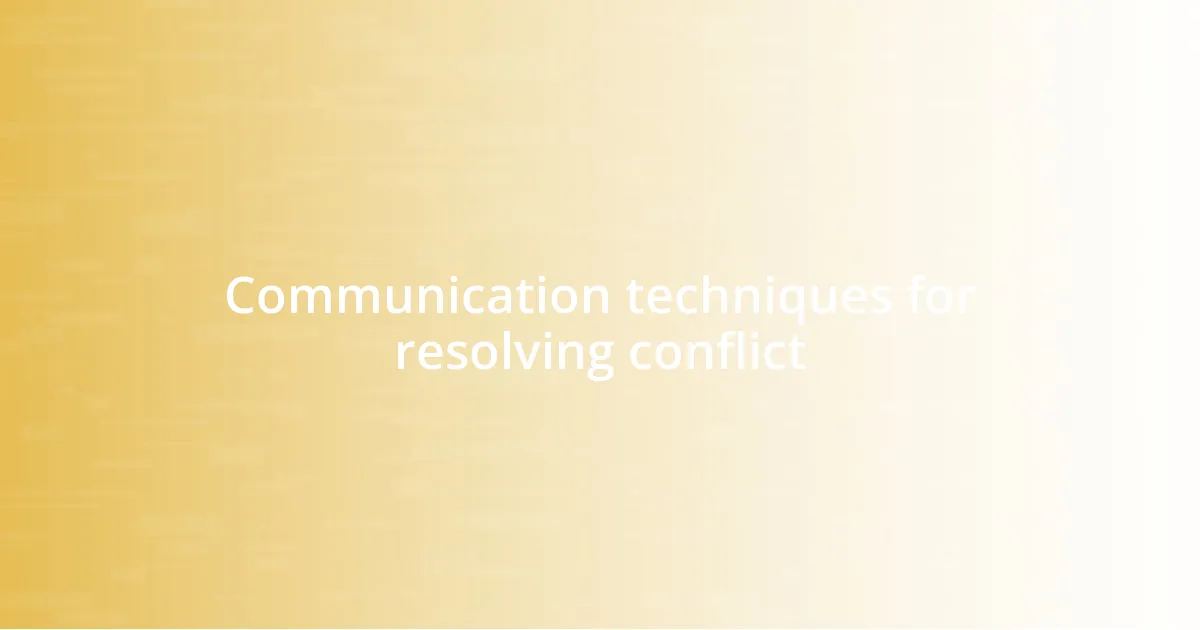
Communication techniques for resolving conflict
When it comes to resolving conflict within a team, I’ve found that employing clear, direct communication techniques can be transformative. I recall a particularly challenging project where emotions ran high after a disagreement on priorities. Instead of letting frustration simmer, I initiated a “check-in” session, inviting each member to express their feelings openly. This simple act of sharing not only diffused tension but also allowed us to appreciate one another’s perspectives. How often do we simply listen to understand rather than to respond?
Nonverbal communication is another powerful tool that should not be overlooked. I remember during a tense meeting, I noticed some team members crossing their arms and avoiding eye contact, which signaled discomfort and defensiveness. By being conscious of these subtle cues, I took a moment to verbally acknowledge their feelings, inviting a more open dialogue. It really struck me how much body language can reveal about underlying issues, and addressing it head-on created a more inclusive atmosphere.
Moreover, asking open-ended questions can profoundly shift the dynamics in conflict situations. I once posed the question, “What do you think our ideal outcome should look like?” during a resolution process. This simple prompt encouraged deeper reflection and allowed the team to focus on shared goals rather than the conflict itself. It was enlightening to see how shifting our focus in this way brought us closer together, fostering unity instead of division. Have you tried this approach in your own team discussions? It could reveal surprising insights and spark collaboration where it’s most needed.
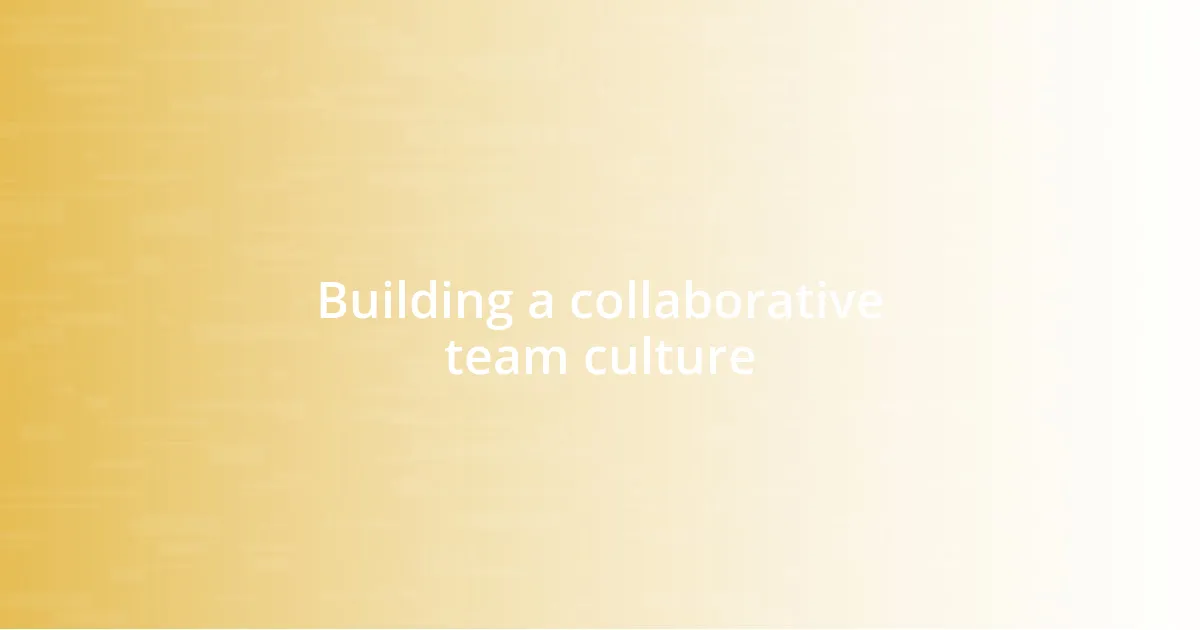
Building a collaborative team culture
Fostering a collaborative team culture requires intentional effort. I’ve seen teams thrive when everyone feels valued and included. There was a time when I implemented a “team spotlight” initiative, allowing each member to take turns sharing their unique skills or personal projects. It transformed perceptions and created an atmosphere where everyone felt appreciated, ultimately strengthening our bond.
Creating shared goals is another pivotal aspect of collaboration. Reflecting on a recent project, we crafted a visual roadmap that highlighted our mutual objectives and milestones. It was incredible to see how everyone felt a sense of ownership in our journey, as if we were all in the same boat rowing toward a common destination. Doesn’t it make you think about how much more we could achieve together when we’re aligned on our purpose?
Moreover, I’ve learned that celebrating small wins can significantly enhance team spirit. During one of our project phases, I suggested a “high-five moment” at the end of each sprint, where we’d acknowledge our progress, no matter how small. The joy and energy in those moments were contagious, and they reminded us that teamwork isn’t just about tackling challenges—it’s also about relishing shared successes. Have you ever noticed how these little celebrations can turn even the most mundane tasks into memorable experiences? They truly help to solidify a collaborative culture, making every team member feel like an essential part of the journey.
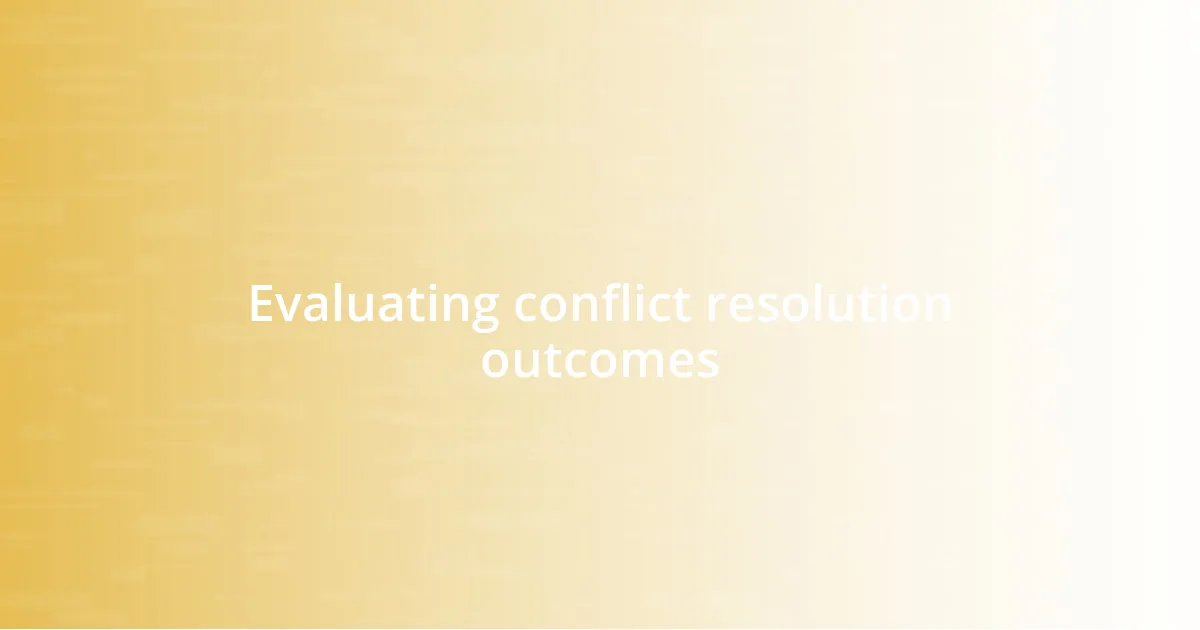
Evaluating conflict resolution outcomes
Evaluating the outcomes of conflict resolution is crucial to understanding our team’s dynamics. In my experience, I remember a situation where we implemented a new conflict resolution strategy, and afterward, I conducted a brief survey among team members. The results revealed not just relief but an unexpected appreciation for the process itself. It made me realize how reflecting on our resolution efforts can deepen trust and collaboration. Have you ever sought feedback after a resolution? It could provide insights that shape future interactions.
Another time, I facilitated a debriefing session shortly after a significant conflict was resolved. I encouraged open discussions about what worked and what didn’t. Hearing one team member express how valued they felt during the resolution process was eye-opening. It reinforced my belief that evaluating outcomes isn’t solely about sorting through the resolution’s effectiveness; it also involves understanding the emotional impact on individuals. Isn’t it fascinating how addressing feelings can strengthen team cohesion?
Lastly, I often find myself revisiting the results after a resolution to gauge long-term effects. For instance, I tracked our project’s progress and noticed remarkable improvement in team collaboration post-conflict. What struck me was that the real success lies not only in resolving the conflict but also in witnessing a renewed sense of teamwork as we tackled subsequent challenges. This continuous evaluation ensures the learning never stops, making each conflict less daunting with time. How do you assess your team’s journey after a conflict?










